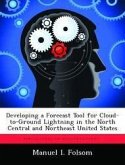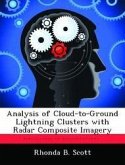Air Force operations are directly impacted by weather on a daily basis. Erroneous forecasts negatively impact mission readiness and consequently cost the government time, in terms of wasted man-hours, and money. Tornadoes complicate the forecasting process even further as they often strike with little or no warning; directly impacting the United States Air Force mission. Advanced forecast lead-time could make a difference to minimize loss to both USAF personnel and assets. This study examined lightning data from 64 storm events from 1995-2000 in search of unique lightning signatures indicative of tornadic activity. Overall flash rates, percentage of positive flashes, positive and negative peak currents and multiplicity for each case were separated into two categories based on tornado intensity and season of occurrence. The cloud-to-ground lightning data was then scrutinized with the help of time-series analysis. Based on the results of this research, there is little evidence to support the theory that specific lightning trends emerge prior to tornado genesis.
Hinweis: Dieser Artikel kann nur an eine deutsche Lieferadresse ausgeliefert werden.
Hinweis: Dieser Artikel kann nur an eine deutsche Lieferadresse ausgeliefert werden.








